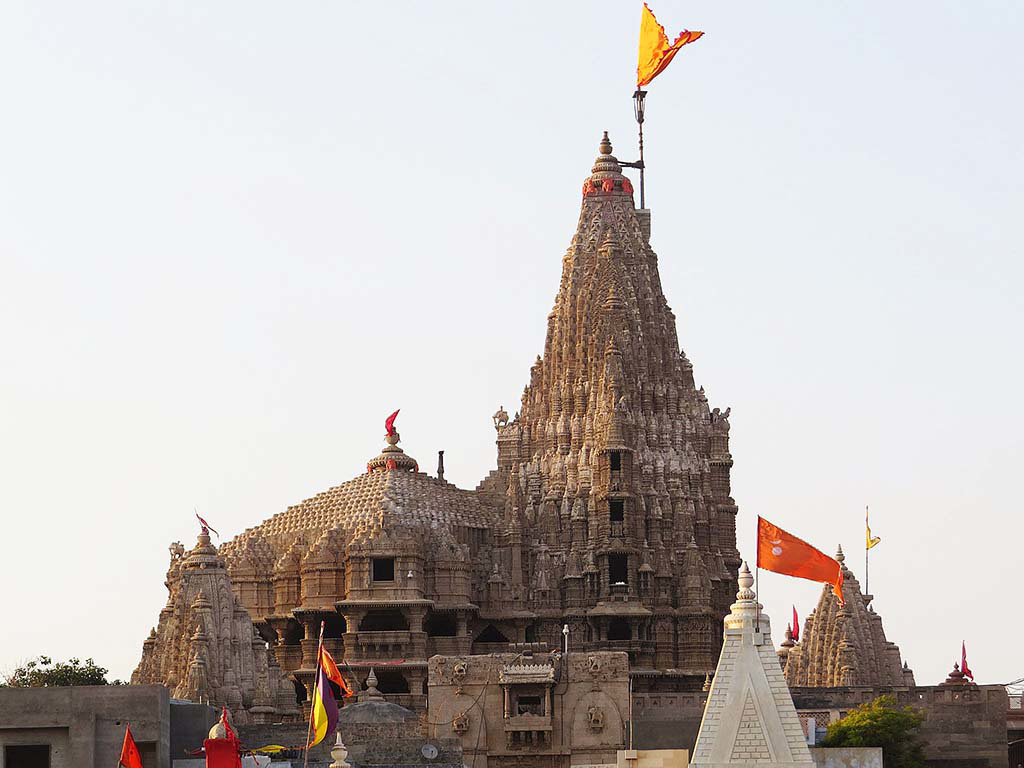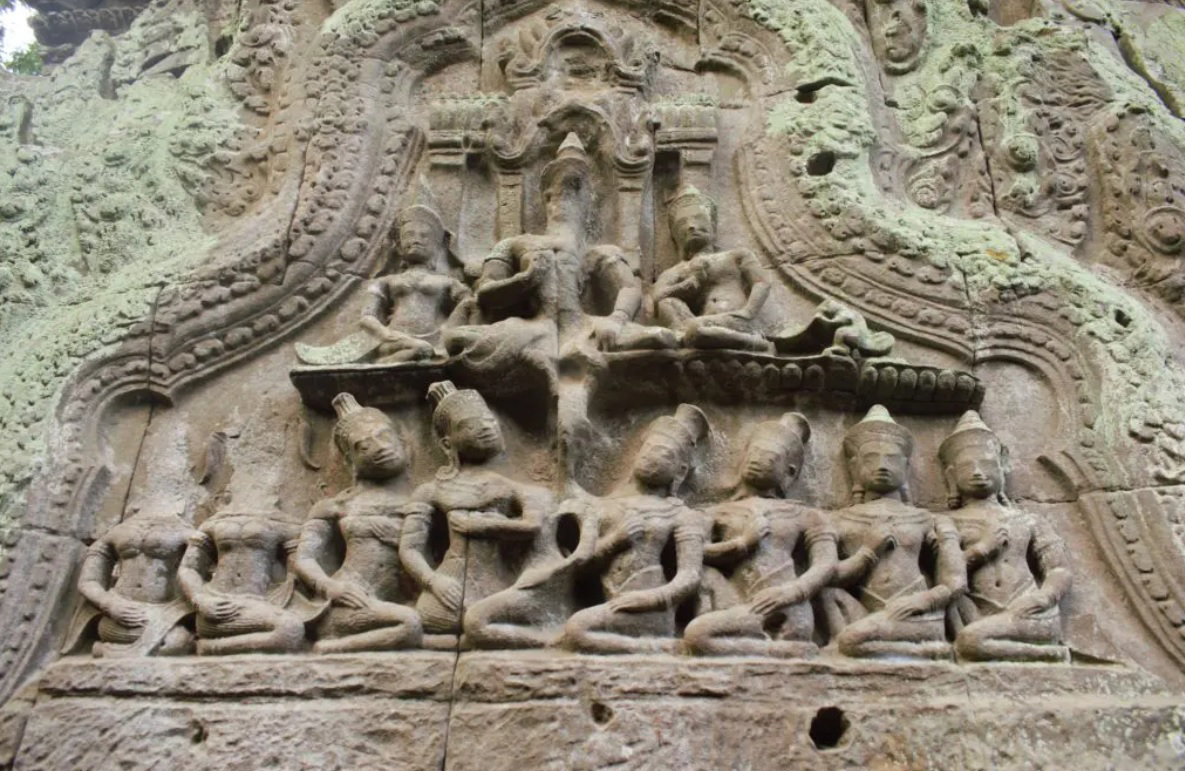A UFO War in Ancient India, and its Tantalizing Links to the Modern-Day UFO Phenomenon

Those who have followed the UFO phenomenon for sometime are well aware how these strange aerial machines befuddle us with their seemingly weird and unpredictable movements, which are completely unlike those of standard commercial airliners or military aircrafts. The fact that eye-witness reports from all over the world mention a similar set of bizarre behavior associated with UFOs, tells us that something inexplicable has been going on in our skies for a long time. A long, long time, indeed, if we turn over the pages of the ancient records of humanity. For UFOs are not a new phenomenon at all, and have been observed, recorded and passed down through the oral traditions of many cultures. One of the UFO hotspots of the ancient world was India, where aerial vehicles called “vimanas” have been mentioned in the legends time and again.
But, before we go there, let me quickly jot down some of the key features of UFOs from the full gamut of recorded sightings over the past few decades. I shall refer back to this list later, when I start discussing the UFO war described in the ancient Indian text.
UFOs appear to have a metallic body, with light reflecting ability. They come in different shapes viz. disc-shaped, spherical, cylinder, triangle etc. Certain reports indicate that UFOs can also change their shape.
UFOs can move away and disappear at extremely high speeds, far exceeding the speed of sound. Yet, they do so noiselessly, without producing the expected “sonic boom”. How they defy the known laws of physics is anybody’s guess.
They can accelerate / decelerate or ascend / descend vertically extremely quickly. The UFO occupants, obviously, don’t seem to mind very high G forces.
They are highly maneuverable. They can change directions drastically in an instant, and sometimes move in a zigzag motion.
UFOs have been seen standing still in mid air and hovering over a specific place.
A UFO spotted at night generally has a bright array of flashing lights of different colors.
Sometimes a single UFO may split up into multiple UFOs, which whiz off in different directions. Conversely, a number of UFOs with flashing lights could come together and give the appearance of a single object. Sometimes a bunch of UFOs can move in a V-shaped formation.
A UFO can turn off its lights and become invisible. This typically happens when fighter planes get too close to it to investigate. In such cases, the lights are turned on again once the fighter planes move away.
Sometimes a UFO sends down brilliant beams of light to the ground or into water bodies. They have the ability to lift up heavy objects by means of the light beam, including cars, humans and animals. They have been seen descending into water bodies like lakes and oceans.
Many people have seen small balls of light coming out of a UFO in mid-air and dart around, as if they are intelligent, conscious entities.
UFOs cause electronic interference with car radios, engines, and aircraft communication systems. There are reports by airline pilots that their weapons systems were temporarily disabled, only to come back online after the UFO was gone.
These are some of the UFO characteristics that recur in various eye-witness reports. It is possible to add to this list, of course, since UFOs keep surprising us with their behavior from time to time, but this will do nicely for now. Quite amazingly, some of the features listed here were observed and recorded thousands of years ago in an incredible story of a UFO battle from ancient India.
The story that I am going to relate has been documented in an ancient text called Srimad Bhagavatam [1], the composition of which is attributed to the sage Vyasa – the same person who composed the Indian epic, the Mahabharata. It tells of a king named Salva, who had propitiated Lord Shiva through his penances and acquired a vimana i.e. an aerial vehicle. In Hinduism, Shiva is the patron god of yoga and meditation, who takes on the fierce form of a “destroyer” at the end of a Yuga. The vimana that Salva obtained was called Saubha, and it was built by an “asura” called Maya or Mayasura. This is what the text tells us:
The great Lord Umapati [Shiva] is known as “he who is quickly pleased,” yet only at the end of a year did he gratify Salva, who had approached him for shelter, by offering him a choice of benedictions. Salva chose a vehicle that could be destroyed by neither demigods, demons, humans, Gandharvas, Uragas nor Raksasas, that could travel anywhere he wished to go, and that would terrify the Vrsnis. Lord Siva said, “So be it.” On his order, Maya Danava, who conquers his enemies’ cities, constructed a flying iron city named Saubha and presented it to Salva.
Maya – who built this flying city of iron – was not an ordinary human being. He was a “danava” i.e one of the sons of the primeval goddess of the waters, Danu. The danavas, along with the daityas (i.e. the children of the goddess Diti) were classed as “asuras” or “titans” in Hindu mythology. The term “asura” means “powerful” or “mighty”, and may be linked to the “aesir” of Norse legends, where it means “lord” or “god”. The asuras are powerful beings with magical powers, and although they are generous and pious by nature, they are also prone to being beset by pride, anger, jealousy, lust, greed and other egoic tendencies, which brings them into frequent confrontation with the gods (devas).
Maya was one of the leader of the asuras, and was famed for his architectural and astronomical skills. Whether he had any linkage to the Maya civilization of Mesoamerica is conjectural, for nothing specific is mentioned in the Indian texts along these lines. However, considering that the Mayans were also expert builders and astronomers, it would not be far-fetched to think that the asura Maya had a role to play in the evolution of their civilization.
Coming back to the story, on acquiring the Saubha vimana, Salva immediately attacked Dvaraka, the golden, fortified city built by Lord Krishna on the western coast of India. As per Hindu beliefs, Lord Krishna was an incarnation of the Supreme Being who had taken birth towards the end of the Dwapara Yuga (Silver Age), in order to cleanse the planet of the many bloodthirsty, powerful warriors and tyrants, and to re-promulgate the sacred wisdom to serve as a beacon of light for humanity during the dark age of Kali (Iron Age) that was soon to follow. Salva regarded Krishna as his enemy, since Krishna had killed many of his powerful allies. The text tells us:
This unassailable vehicle was filled with darkness and could go anywhere. Upon obtaining it, Salva went to Dvaraka, remembering the Vrsnis’ enmity toward him. Salva besieged the city with a large army, O best of the Bharatas, decimating the outlying parks and gardens, the mansions along with their observatories, towering gateways and surrounding walls, and also the public recreational areas. From his excellent airship he threw down a torrent of weapons, including stones, tree trunks, thunderbolts, snakes and hailstones. A fierce whirlwind arose and blanketed all directions with dust. Thus, terribly tormented by the airship Saubha, Lord Krsna’s city had no peace, O King, just like the earth when it was attacked by the three aerial cities of the demons….
At one moment the magic airship built by Maya Danava appeared in many identical forms, and the next moment it was again only one. Sometimes it was visible, and sometimes not. Thus Salva’s opponents could never be sure where it was. From one moment to the next the Saubha airship appeared on the earth, in the sky, on a mountain peak or in the water. Like a whirling, flaming baton, it never remained in any one place. Wherever Salva would appear with his Saubha ship and his army, there the Yadu commanders would shoot their arrows…As the Yadus and Salva’s followers thus went on attacking one another, the tumultuous, fearsome battle continued for twenty-seven days and nights.
In this passage we find a number of striking correlations between the descriptions of Salva’s vimana, and the characteristics of UFOs which I had listed out earlier. Let me go through them one by one. Firstly, the vimana acquired by Salva has been described as a “flying city of iron”, which is capable of going anywhere. UFOs, on the other hand, have mostly been described as metallic objects with a shiny surface. So, apparently, these aerial vehicles are made of some kind of metal, possibly with a high iron content.
Salva’s vimana sometimes appeared as a single object, and sometimes in many identical forms. This happens frequently in case of UFO sightings. A number of bright UFOs may bunch together and give the appearance of a single object, and then, suddenly, split up into multiple bright objects that fly off in different directions.
Salva’s vimana was sometimes visible, and sometimes not. UFO witnesses have said that these objects can suddenly turn off their lights and become invisible. UFOs can also accelerate away at tremendously high speeds and disappear almost instantly.
Finally, Salva’s vimana was said to constantly dart from one place to another, never remaining still in any one place. This agrees with the extreme maneuverability of UFOs. Many sightings mention that UFOs can change their direction drastically and rapidly, which, in turn, makes it very difficult for fighter planes to trail them.


These correlations make it quite obvious that the vimana described in the Srimad Bhagavatam is what we today know as a UFO. Of course, to the ancients, it was not an “Unidentified” Flying Object. They knew very well who built it, and how king Salva got his hands on it. However, they wouldn’t have had any idea as to how these machines were built, for, as the text tells us, it was built by Maya, the leader of the asuras. Humans had no part in their construction. Let us now return back to the story, to see how this aerial assault on Dvaraka finally ended.
The reason why Salva’s attack on Dvaraka had lasted twenty seven days is because, Krishna, who was the foremost warrior of the Yadus, had gone to Indraprastha (near modern-day Delhi) to attend a royal sacrifice. After he returned, the battle ended quite swiftly.
Invited by Yudhisthira, the son of Dharma, Lord Krsna had gone to Indraprastha. Now that the Rajasuya sacrifice had been completed and Sisupala killed, the Lord began to see inauspicious omens. So He took leave of the Kuru elders and the great sages, and also of Prtha and her sons, and returned to Dvaraka…After He arrived at Dvaraka and saw how His people were threatened with destruction, and also saw Salva and his Saubha airship, Lord Kesava [Krishna] arranged for the city’s defense and then addressed Daruka [Krishna’s charioteer] as follows: “O driver, quickly take My chariot near Salva. This lord of Saubha is a powerful magician; don’t let him bewilder you.”
Thus ordered, Daruka took command of the Lord’s chariot and drove forth…Lord Krsna then pierced Salva with sixteen arrows and struck the Saubha airship with a deluge of arrows as it darted about the sky…While Salva continued to hurl torrents of weapons at Him with great force, Lord Krsna, whose prowess never fails, shot His arrows at Salva, wounding him and shattering his armor, bow and crest jewel. Then with His club the Lord smashed His enemy’s Saubha airship. Shattered into thousands of pieces by Lord Krsna’s club, the Saubha airship plummeted into the water. Salva abandoned it, stationed himself on the ground, took up his club and rushed toward Lord Acyuta [Krishna]…Employing His disc weapon, Lord Hari [Krishna] removed that great magician’s head with its earrings and crown, just as Purandara [Indra] had used his thunderbolt to cut off Vrtra’s head.
Thus, the magical Saubha vimana, fashioned by Maya asura and given as a boon to Salva by Lord Shiva, was eventually destroyed by Lord Krishna using his club. This suggests that, even modern-day UFOs are liable to crash or may be brought down by suitable weapons. There have been a few stories of UFO crashes, the most famous being the Roswell incident of 1947, although it is difficult to be certain of the facts of that case and of others of a similar nature.
Another important insight that can be gleaned from this story is that the ancient UFOs were not built by some prehistoric Boeing company, but by the “asuras” or “titans” – a race of powerful, semi-divine beings with magical abilities. If you are wondering where the asuras live, you need not venture very far; for they don’t live on another planet, but right below our feet in an underground realm called Patala, a Sanskrit term which means, “that which is below the feet”.
As per the ancient Indian texts, Patala has seven realms, which are occupied by the asuras, along with other supernatural entities such as the nagas (human-serpent hybrids), rakshasas (giants), yakshas (dwarfs) etc. In the Bhagavata Purana, these seven realms are described as the seven subterranean paradises (bila-svargas), which are filled with beautiful houses, groves, lakes, lovely maidens, splendid jewels and unlimited opulence. Mayasura has constructed many brilliantly decorated cities in Patala. Life here is one of perpetual pleasure and sensory enjoyments. There is no old age, no decay, and no disease in Patala. Even though there is no sunshine in these regions, the effulgence of the brilliant jewels with which the residents of Patala decorate themselves, light up the entire region. It is due to the absence of sunlight, that the concept of time does not exist in Patala, whose inhabitants enjoy enormously long lives, free of anxiety or fear.[2]
Patala sounds like the perfect destination for the next vacation! Except that, it is not easy to get there. The entrances to this underworld paradise are camouflaged and heavily guarded. In Tibetan Buddhism, Patala (meaning, “the Underground”) can be entered through specific Asura caves in the sacral landscape, which are closely guarded by dakinis (“sky goers”) – the Buddhist counterparts of the British faeries. Robert Mayer of the Oxford University writes, “Once in Patala, the yogin could gain such boons as longevity, magical knowledge, fabulous material treasures, and, not least, extraordinary pleasures, especially erotic ones.”[3] This almost sounds like one of those exotic travel brochures that you read on a long, boring flight.
So, we are basically talking about of a hidden, underground dimension of great opulence and pleasures whose entrances are guarded by invisible faeries. No wonder this stuff passed into the realm of fantasies and legends over time. At some point, I guess, you simply couldn’t talk about it with a straight face. And yet, now we have this global UFO phenomenon, and the ancient texts tell us that UFOs are built by the supernatural beings of Patala. And to add to that, UFOs have been seen entering into water bodies, and many eye-witnesses have reported dwarf alien beings, the dwarfs being one of the members of the faerie folk.
It’s definitely time to bring the topic of Patala out of the cupboard, dust it off and take a fresh look at similar beliefs from around the world. For, it is quite possible that some of the UFO and alien sightings could be of subterranean origin. As to what their plans are for humanity, why they feel the urge to abduct humans and poke them with needles, or what they gain by mutilating animals – these are questions that will continue to baffle us for the time being.
References
[1] Srimad Bhagavatam, Canto 10, Chapters 76 & 77. (SB 10.76.2 – 10.76.33; 10.77.1 – 10.77.37), https://www.srimadbhagavatamclass.com/srimad-bhagavatam-canto-10-chapter-76-text-01/[2] Bhagavata Purana 5.24, https://web.archive.org/web/20100104040631/http://srimadbhagavatam.com/5/24/en
[3] Robert Mayer, “The Importance of the Underworlds: Asuras’ Caves in Buddhism, and Some Other Themes in Early Buddhist Tantras Reminiscent of the Later Padmasambhava Legends”, Journal of the International Association of Tibetan Studies, 2007.




